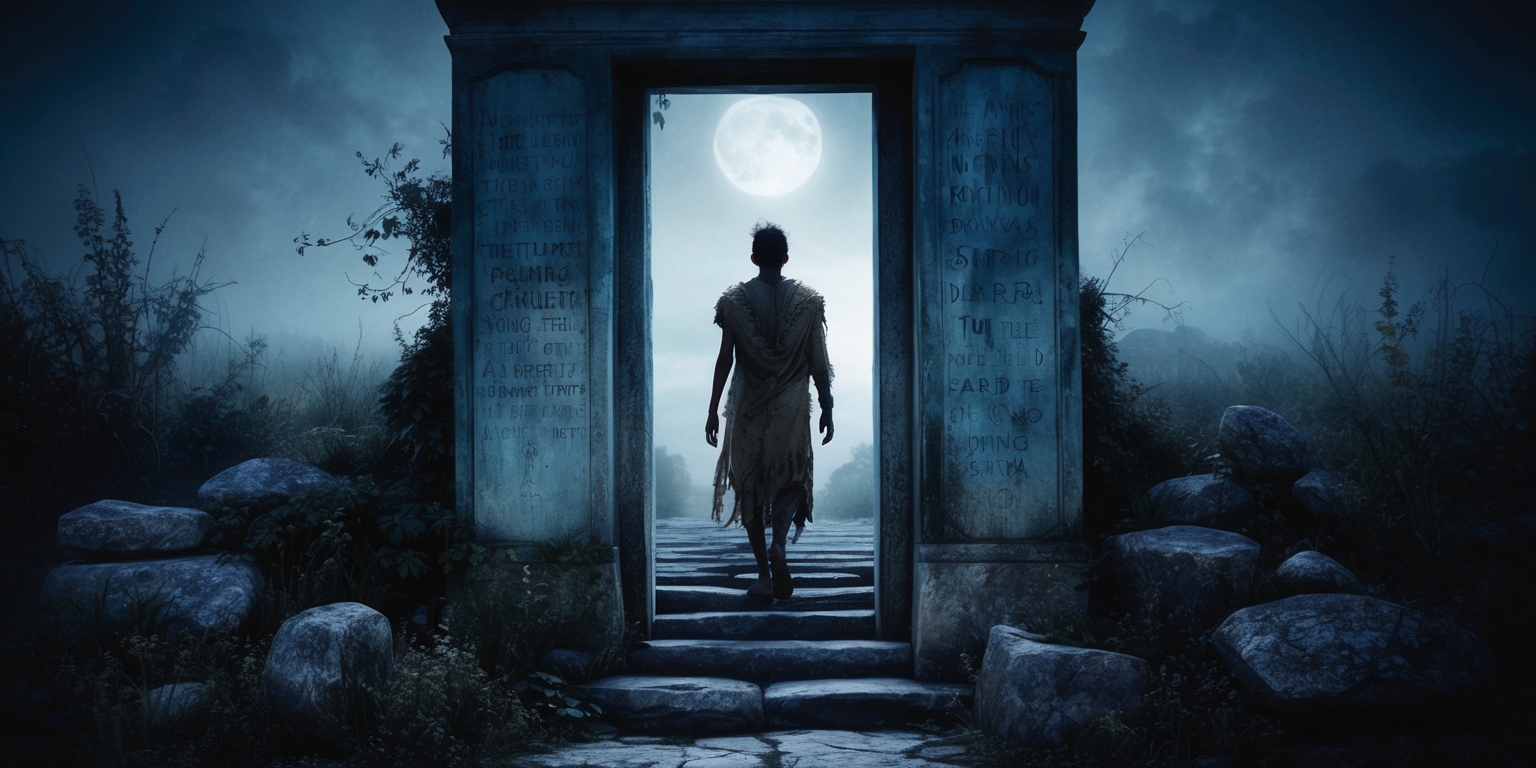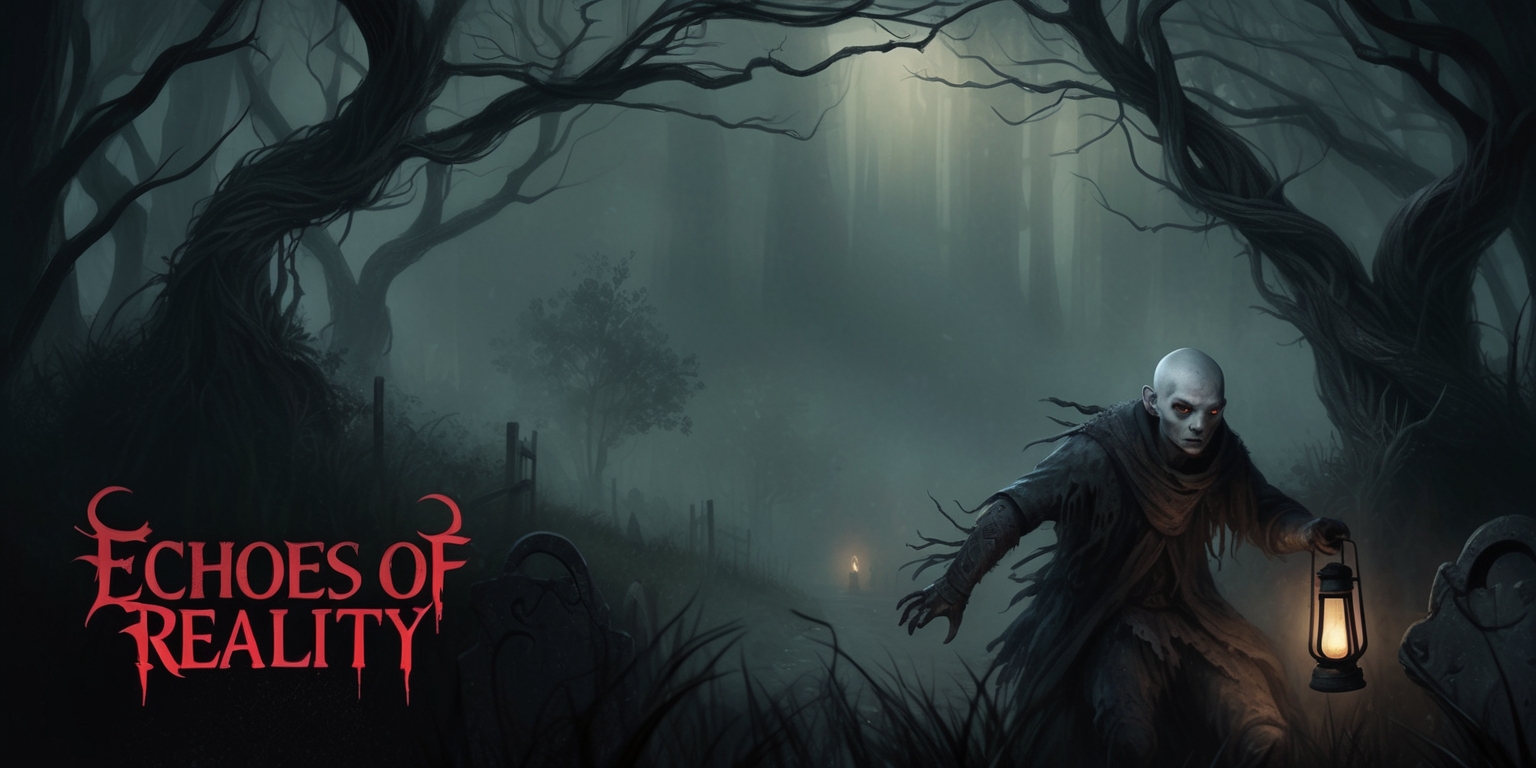Crossing the Threshold: The Haunting Convergence of Survival, Myth, and Memory
Oct-02-2025

The game beckons players to venture into a narrative shrouded in mystery and blurred lines between fact and fiction. At first glance, it presents itself as a story with real-world inspirations, hinting at events that could have unfolded in an eerie, forgotten forest. As the gameplay unfolds, one finds that the boundaries separating documented history from urban legend become increasingly hazy. The underlying narrative draws from survival tales and the terror of isolation in an unknown wilderness, provoking questions about the authenticity of these harrowing experiences. With its atmospheric setting and unexpected narrative twists, the game pushes players to reconsider what they accept as true and what is merely a creative embellishment of real events.
Echoes of Reality and Folklore
The storyline weaves together snippets of documented events with imaginative horror lore, creating a tapestry where reality and folklore intertwine seamlessly. Embedded within the narrative is a claim that parts of the story are directly inspired by real-life events, such as the daring survival of a group of missing children in a daunting rainforest. This juxtaposition immediately sparks intrigue as players begin to question the origin of these elements. The game suggests that the chilling landscape and its mysterious inhabitants are more than mere fantasy, hinting at historical events that have since mutated into urban myth. The deliberate blending of factual survival instances with fantastical entities, such as eerie creatures roaming the woods, creates a compelling narrative that continuously challenges players’ expectations about what is genuinely real.
Immersive Interface and Narrative Origins
Upon launching the experience, users are immediately drawn into an interface designed to evoke curiosity and suspense. The introductory screens offer more than a neat visual display; they function as gateways to the deeper backstory of a haunted forest teeming with unusual phenomena and unexplained disappearances. Players are introduced to the lore of mysterious figures and ominous creatures, such as an enigmatic Deer-like presence, all woven into a tapestry of suspense that hints at true events. This early narrative setup serves a dual purpose: it primes the player for a psychologically rich experience while also building anticipation for what lies deeper within the game. The design choices—a minimalistic yet intriguing mixture of imagery and text—reinforce the claim that the game is built on fragments of actual events, inviting a delicate interplay between empirical evidence and imaginative storytelling.
Historical Hints and Survival Realities
The game’s narrative is laced with subtle nods to actual events that have captured public attention, adding layers of intrigue to the immersive experience. One particularly tangible reference is an incident involving children enduring an extended period in a perilous environment, which mirrors documented survival stories from remote natural settings. Although the game does not cite these events explicitly, the similarities are unmistakable, suggesting an influence that bridges the factual with the imagined. This careful balancing act allows the audience to traverse a line where objective history meets creative elaboration. Through these historical hints, the game Develops a narrative that is both immediately relatable and deeply engaging mysterious, encouraging players to look beyond conventional explanations while pondering the possibility that their own perceptions of truth might be intertwined with elements of well-wrought fiction.
Blending Urban Legends with Creative Mythos

In the heart of the gameplay lies an adventurous twist: the seamless integration of urban legends with a narratively rich mythos. While certain elements, such as the notion of a deer-like creature with otherworldly qualities, draw from ancient folklore and modern myths, the narrative carefully infuses these concepts with hints of tragic real-life survival tales. Such an approach transforms the seemingly supernatural occurrences into symbolic representations of deep-seated human anxieties and determination when confronted by seemingly insurmountable challenges. The symbolism of these fantastical entities is developed with layers of complexity, prompting players to consider them not simply as antagonistic figures, but as manifestations of the nightmarish reality experienced by those trapped in the vast unknown. In this fusion of myth and memory, the game constructs an experience that feels at once both hyperbolically eerie and vaguely believable.
Interweaving Real-World Incidents and Fiction
A critical aspect of the game’s narrative framework involves the strategic incorporation of real-world incidents into a predominantly fictional scheme. While the core storyline leans heavily on imaginative creations—such as unsettling encounters with cult-like figures and supernatural adversaries—there is an undeniable anchor in reality through allusions to harrowing survival events. The narrative alludes to rescues and disappearance cases that are reminiscent of true accounts from remote, dangerous locales, subtly suggesting that such extremes of human experience can sometimes blur with myth. By embedding these echoes of fact into an otherwise fantastical context, the story invites players to dissect the layers of its storytelling. Each gameplay moment becomes a chance to question the plausibility of what is seen, ensuring an ongoing dialogue between the specters of history and the allure of fiction.
Visual Atmosphere and Environmental Storytelling
The eerie aesthetics of the game further enhance its central theme of blurred boundaries between truth and legend. The digital forest, crafted with painstaking detail, serves as more than a setting that evolves into a distinct presence, resonating throughout the scene the emotional intensity of survival and the enigmatic mystery of forgotten lore. Dark, shadowed paths converge with luminous clearings, evoking a sense of both danger and refuge. The contrasting visual elements mirror the dual narrative of factual survival struggles and the spectral, metaphorical representations of internal terror. Through careful environmental storytelling, every rustle in the undergrowth and every flicker of light seems to hint at secrets waiting to be unraveled. The composite visuals are deliberately designed to amplify the player’s experience, ensuring that the eerie ambiance is as immersive as the narrative itself.
Interactive Engagement with Ghosts of the Past
The game encourages an interactive exploration of its harrowing backstory, inviting players to traverse landscapes that blend observed reality with whispered legends. In its design, there is a distinct emphasis on encouraging a participative relationship with the narrative. Players collect fragments of lore—each piece of evidence carefully interlaced with notes on missing children and mysterious sightings—and gradually piece together the hidden truth behind the forest’s reputation. This method of engagement deepens the overall experience by ensuring that Players assume an active role rather than simply being passive receivers of a… set storyline but active investigators of a multi-layered mystery. The game’s interactive mechanics compel players to critically examine every clue and environmental detail, transforming their expedition into a self-directed investigation that continually begs the question: where does historical fact end and narrative embellishment begin?
Character Intricacies and Hidden Backstories
The character design in the game is particularly noteworthy, offering a glimpse into the intricate interplay of personal history and mythic narrative. Central to this are the enigmatic figures who are said to have experienced unspeakable ordeals in the shadowed expanse of the forest. Behind their cryptic and often tragic expressions lies a tapestry of experiences—one that is partially rooted in true events and partially in the imagination of those left behind. The game portrays these characters with a haunting ambiguity, leaving players to ponder whether their stories are entirely factual or a product of fear-driven memory. By allowing the characters to embody both the dire realities of survival and the mythical aspects of the unknown, the game layers each encounter with complexity and social commentary on the nature of truth when filtered through the lens of trauma and memory.
Multifaceted Narrative Techniques and Symbolism
The storytelling in this experience relies heavily on a mixture of symbolic imagery and multifaceted narrative techniques that compel thoughtful engagement. Symbolism is a recurring motif—a deer-like monster manifesting as the personification of unspoken fears, and enigmatic cult figures representing the breakdown of societal norms in desperate situations. These symbols are not presented in isolation; instead, they are interwoven into the game’s broader narrative, reflecting both literal survival challenges and the more abstract horrors of isolation in a wild, untamed environment. The narrative intentionally blurs the line between what is historically plausible and what is exaggerated into metaphoric constructs. Through repeated encounters and subtle context cues, players learn to interpret each symbol in the midst of an evolving storyline that is as much about emotional resonance and collective memory as it is about tangible events.
Dynamic Storytelling Through Gameplay Elements
Beyond its narrative, the game utilizes dynamic gameplay elements to further immerse players into its dual-reality setting. Gameplay mechanics are specifically designed to reinforce the theme of uncertainty amidst survival challenges. As players progress, they encounter puzzles and decision points that reflect the underlying tension between literal and symbolic threats. The integration of environmental clues, interactive narrative segments, and historical allusions ensures that Every moment is imbued with the potential for uncovering a hidden truth about the forest’s dark legacy. Every choice and every discovered manuscript inspires a more profound examination of the essence of fear and the collective memory of those who have traversed similar real-world anomalies. This deliberate design creates a gameplay experience where each action resonates with deeper narrative significance, nudging the players toward a more profound engagement with both the storyline and its thematic intricacies.







